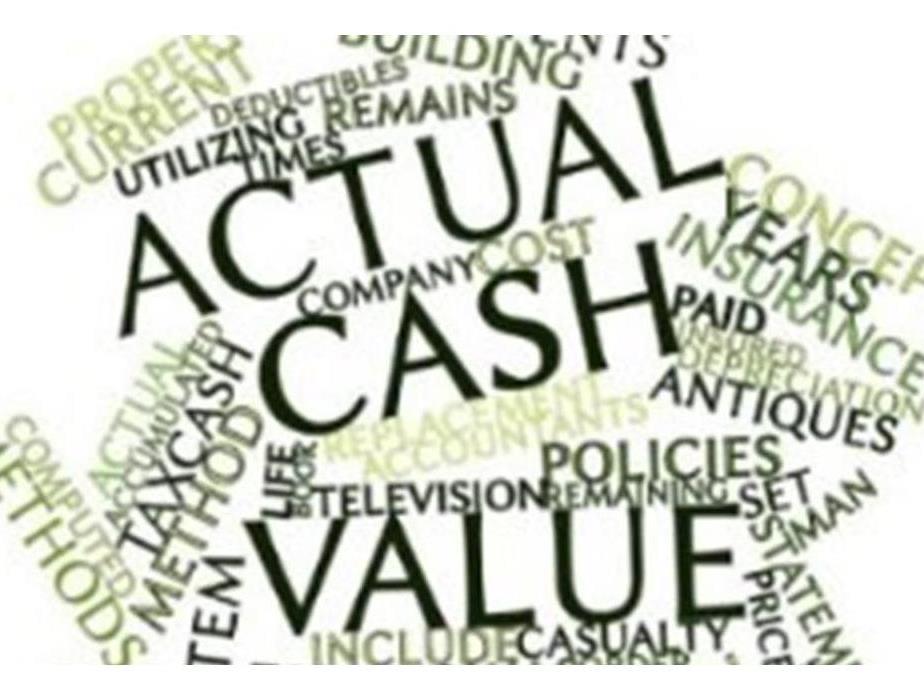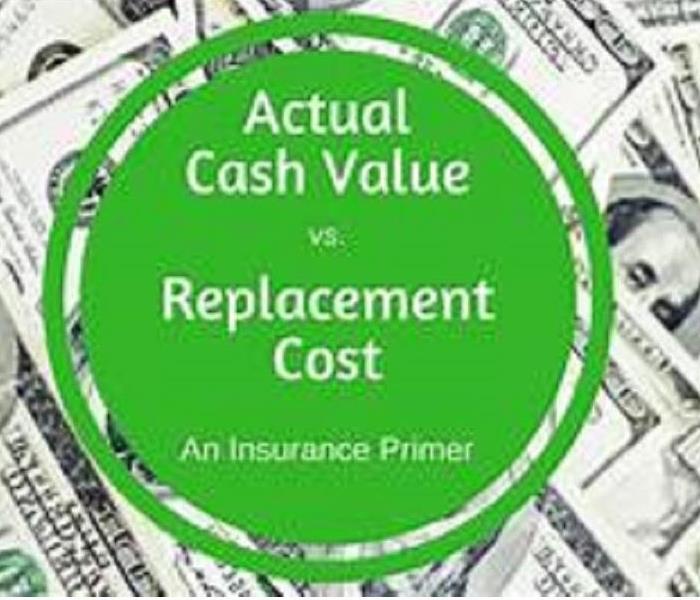Recent General Posts
Seasonal Home Health Care Tips from SERVPRO® of Santa Rosa County
1/27/2024 (Permalink)
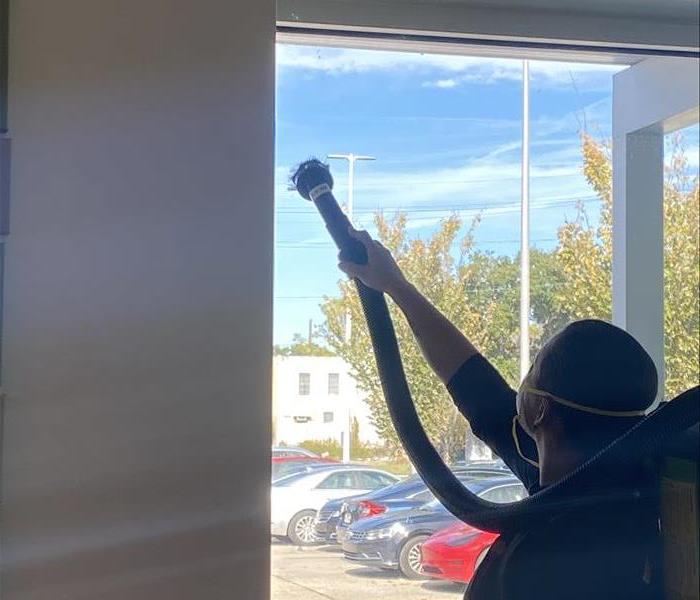 SERVPRO crew performing cleaning services
SERVPRO crew performing cleaning services
As the seasons change, so do the needs of your home. SERVPRO of Santa Rosa County cares about your property's well-being, and we're here to provide you with valuable seasonal home health care tips to keep your home in top shape throughout the year.
Spring: Renewal and Cleaning
Deep Clean: Spring is synonymous with cleaning. Take the time to deep clean your home, including dusting, vacuuming, and cleaning windows. Don't forget those often-neglected areas like baseboards and ceiling fans.
Inspect Your Roof: Winter weather may have taken a toll on your roof. Check for loose or damaged shingles and repair them promptly.
Landscaping: Trim trees and shrubs, remove dead branches, and clean up debris to prepare your yard for the growing season.
Summer: Energy Efficiency and Outdoor Maintenance
HVAC Maintenance: Schedule professional maintenance for your air conditioning system to ensure it runs efficiently during the hot summer months.
Gutter Cleaning: Clean gutters to prevent water damage and ensure proper drainage during summer storms.
Pool Care: If you have a pool, follow regular maintenance guidelines to keep it safe and enjoyable.
Fall: Preparation for Winter
Inspect Home Exterior: Examine your home's exterior for cracks or gaps in the siding, foundation, or windows. Seal any openings to prevent cold air from entering and warm air from escaping.
Heating System: Have your heating system professionally serviced before the winter season. Replace filters regularly to maintain indoor air quality.
Fireplace Safety: If you have a fireplace, ensure it's clean and in good working order. Consider scheduling a chimney inspection.
Winter: Cold Weather and Safety
Winterize Your Home: Insulate pipes to prevent freezing, and seal drafts around doors and windows. Maintain a warm and safe indoor environment.
Emergency Kit: Prepare an emergency kit with essentials like non-perishable food, blankets, flashlights, and a first-aid kit.
Holiday Safety: During the holiday season, be cautious with decorations and candles. Keep fire safety in mind, especially when using space heaters.
Year-Round: Regular Check-Ups
Smoke and Carbon Monoxide Detectors: Test smoke and carbon monoxide detectors monthly and replace batteries as needed.
Deep Cleaning: Periodically conduct a thorough cleaning to maintain a healthy indoor environment and prevent allergen buildup.
Emergency Plan: Create and practice a family emergency plan so everyone knows what to do in case of fire, severe weather, or other emergencies.
At SERVPRO of Santa Rosa County, we believe that a well-cared-for home is a happy and safe home. By following these seasonal home health care tips, you can ensure that your property remains a comfortable and secure haven throughout the year. Should any unexpected disasters, such as water damage or fire damage, affect your home, remember that SERVPRO is just a call away, ready to provide professional restoration and cleanup services.
Safeguarding Your North Florida Home: Winter Weather Hazards and Prevention
11/30/2023 (Permalink)
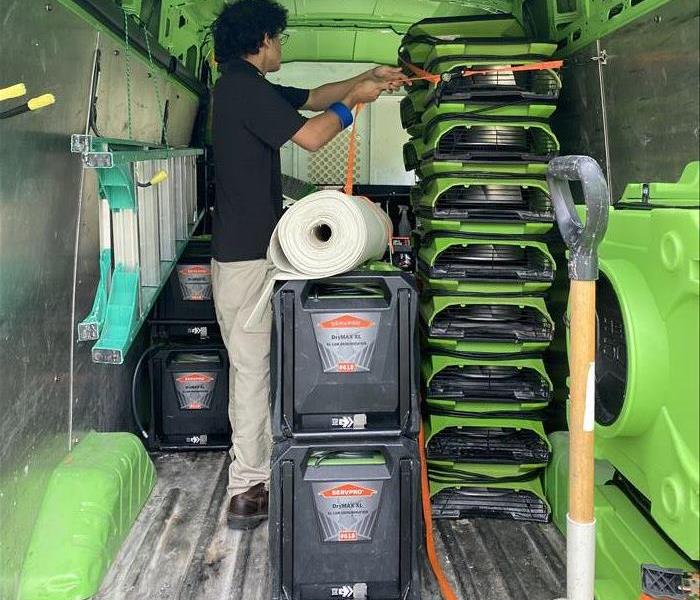 SERVPRO team member readying equipment
SERVPRO team member readying equipment
When you think of Florida, you may picture sunny skies and warm temperatures. However, even in the Sunshine State, winter weather can bring unexpected challenges and hazards to your doorstep. While the winters in North Florida are generally mild, it's essential to be prepared for the occasional cold snap or unusual weather event. In this blog post, we'll explore potential hazards of winter weather in North Florida and share valuable steps you can take to minimize risks and protect your home.
Winter Weather Hazards in North Florida:
Freezing Temperatures: Sudden drops in temperature can lead to freezing conditions, which may pose various risks to your home.
Frozen Pipes: When temperatures dip below freezing, water pipes in your home can freeze and burst, causing extensive water damage.
Icy Surfaces: Frost and ice can create slippery surfaces on walkways, driveways, and roads, increasing the risk of accidents.
Steps to Minimize Winter Weather Risks:
Insulate Pipes:
- Ensure that exposed water pipes are properly insulated.
- Use heat tape or pipe sleeves to prevent freezing.
Drip Faucets:
- During cold spells, let faucets drip slightly to keep water flowing and reduce the risk of freezing.
Seal Cracks and Gaps:
- Inspect your home for cracks and gaps in doors and windows, and seal them to prevent drafts and heat loss.
Maintain Heating Systems:
- Have your heating system inspected and serviced regularly to ensure it's working efficiently.
- Replace air filters as recommended by the manufacturer.
Protect Plants:
- Cover sensitive plants or bring them indoors during freezing conditions to prevent damage.
Prepare an Emergency Kit:
- Assemble an emergency kit with essentials like flashlights, batteries, blankets, and non-perishable food items.
Check Smoke and Carbon Monoxide Detectors:
- Test and replace batteries in smoke and carbon monoxide detectors.
- Ensure detectors are working correctly to protect against fire and gas hazards.
Clear Gutters:
- Keep gutters free of debris to prevent ice dams and water backup.
Trim Tree Branches:
- Trim tree branches that could potentially fall and damage your home during winter storms.
Stay Informed:
- Stay updated on weather forecasts and emergency alerts.
- Be prepared to adjust your plans and take necessary precautions based on weather conditions.
Conclusion:
While winter weather in North Florida is typically mild compared to northern states, it's essential to be prepared for occasional cold snaps and unexpected weather events. By taking proactive steps to protect your home and family, you can minimize the risks associated with winter weather hazards. Remember that SERVPRO is here to support you in the event of water damage or other issues caused by freezing temperatures or winter storms. Our experienced technicians are ready to assist you in restoring your home to its preloss condition. Stay safe and prepared, no matter what Mother Nature has in store for North Florida.
Animal Rain
8/18/2022 (Permalink)
 Frog with an umbrella
Frog with an umbrella
Animal Rain
It may not rain cats and dogs, but sometimes it rains tadpoles and tiny fish. This strange meteorological event is probably caused by waterspouts, basically tornadoes that form over water.
Waterspouts start out as vortexes, or columns of rotating, cloud-filled wind. As the vortex descends over an ocean or lake, small aquatic animals may be swept up in the waterspouts funnel.
Changes in pressure and wind force the waterspout to change back into a low-lying cloud, emptying precipitationincluding any creatures swept up in the waterspoutover a nearby landmass.
In 1894, newspapers in Bath, England, reported a rain of tadpoles. In 2009, a storm brought a rain of minnows down on Ishikawa, Japan.
Is Your Homeowners Insurance Good Enough
7/13/2022 (Permalink)
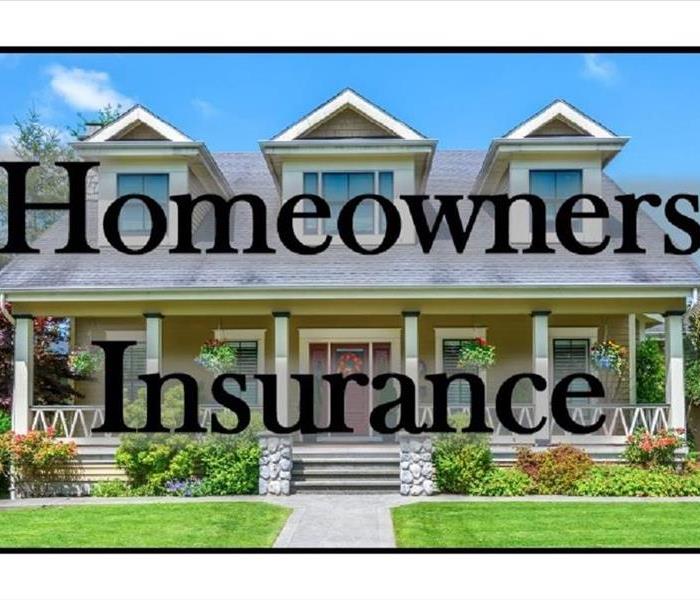 Homeowners Insurance
Homeowners Insurance
HO-1 Covers narrow set of named perils. If not specifically listed in policy text, it is not covered. Belongings & liability typically excluded.
HO-2: Covers the same named perils as 1 along with others including failure of HVAC systems, damage to electrical, & harm caused by falling objects. Might also cover belongings & liability. Coverage is relatively limited.
HO-3: Covers everything an HO-2 does while going much further. HO-3s cover the dwelling, its attached structures, belongings within, & the policyholder’s personal liability. As an open-peril policy, will usually cover anything not excluded in writing. Exclusions include floods and earthquakes.
HO-4: Renter’s ins, this covers the belongings and liability of a tenant but not the dwelling itself, the landlord’s ins would cover that. May also include coverage for additional living expenses.
HO-5: Most wide-ranging form of homeowners ins. It will cover a # of perils on an open-peril basis, often with higher limits than other policy types.
HO-6 (Condo): Similar to comprehensive homeowners ins, except limited to condos. It governs belongings, liability, & some portions of unit structure, the rest would be covered by a homeowners association policy.
HO-7 (Mobile Home): Home insurance policy designed specifically for mobile & manufactured dwellings.
HO-8 (Older Home Form): Similar to an HO-3 but optimized for older homes that may have significant depreciation or be part of a historical registry.
7 THINGS NOT COVERED BY YOUR HOMEOWNERS POLICY
2/24/2022 (Permalink)
- HOME OFFICE EQUIPMENT
Some standard homeowner’s policies have some limited form of coverage for home office items. Usually, the items will not carry enough monetary value to replace if stolen or damaged as part of a larger claim. If you are running a business from home, you should be carrying business insurance to cover the businesses assets. The best rule of thumb is to check your homeowner’s insurance for policy limitations on home office equipment. If you feel the value of the said items is greater than the policy limits, we suggest getting separate insurance or a rider to ensure everything you need to have covered is taken care of.
- SEWAGE TO THE STREET/MUNICIPAL LINES
Issues with your sewage pipes usually occur from the house to the main line. Older homes have Orangeburg piping or tar impregnated wood fiber piping installed before PVC became commonly used. These types of piping are very susceptible to deformation and the encroachment of tree roots. These pipes usually deteriorate and need to be replaced. It’s also not the responsibility of the local municipality until it reaches the easement and becomes part of their network. The burden for repair and clean-up falls on the homeowner.
- BURST PIPES
Burst pipes in the home are, unfortunately, not uncommon. Your insurance almost definitely pays for repairs due to a leak occurring in the home. It won’t cover a flood from an external source. It also may not actually cover repairing the damaged pipes themselves. What?!? That’s right. Most homeowners insurance policies do not cover normal wear and tear. After a burst event, they may posit that your old pipes simply deteriorated over time (as they are apt to do). In that case, they cover the damages, but not the labor and costs to replace the original piping. This includes when you find you need to re-plumb the entire home or a large portion of it.
On top of this, if the insurance company determines that poor drainage caused the water problem, your claim may be denied. Insurance considers drainage a maintenance (and thus non-covered) issue.
- SINKHOLES
If you live in Florida, or as we like to call it: “a bunch of houses built on sand” (see Matthew 7:24-27 for the reference) you may have heard of the potential sinkhole issue. And by “issue” we mean the earth swallowing up part or all of your home like some much-starved leviathan stopping by an all-you-can-eat swimming pool party. Sinkholes clearly are not covered by homeowners insurance and nobody wants to touch those policies with a 100-foot pole. Since Florida has an inordinate amount of potential for sinkholes. This occurs because the land sits atop thousands of pools of underground water. Also, the entire area basically served as swamp land before the 1900s. Consequently, this may be a concern for you.
A majority of sinkholes occur in the west-central part of the state, but all over this has been something that concerns a variety of homeowners. Statistically, I don’t really consider it a big deal, but last year the state’s legislature allowed insurance companies to exclude sinkhole coverage from policies. That created a bit of an uproar and presents a situation whereby you may have a big mess if your house slowly, or suddenly, begins to sink into the earth.
Note: Most policies include catastrophic ground cover collapse. However, this only comes into play when an abrupt loss of ground cover produces structural damage to a building and results in government condemnation of the insured structure and an order to vacate the premises. This type of damage would have to be incredibly severe. The coverage is largely catastrophic-only in nature and won’t come into play unless your home is virtually swallowed up, in part or in whole, by a sinkhole.
- FLOOD DAMAGE
Flood damage includes water damage from external, typically, natural sources such as an ocean, a lake, or a river. If you do not have separate flood insurance coverage and your home floods due to torrential rainfall or storm surge from a hurricane, you’re not going to be covered. At least, the insurance company will blame as much as possible on the flood waters.
Flood insurance is often very inexpensive and should indeed be purchased if your home is anywhere within a 100-year flood plain. You can actually go online at FEMA and search their map service center for Flood Maps of your area and address.
- TERMITES
This may go without saying, but insect damage, and particularly from termites, is not covered by your homeowners insurance. Your best bet here is to keep your home treated (or tented every 5 years if you live in the south where dry wood termites are a nuisance).
- POWER SURGES (NOT FROM LIGHTNING)
A lightning strike is covered, but electrical surges from your power company are likely not. In addition, your insurance may exclude coverage for “electronic components or circuitry that are part of appliances,
fixtures, computers, home entertainment units or other types of
electronic apparatus” even if a lightning strike was responsible. Policies differ on what’s covered, under what conditions, and the limitations for liability and types of equipment. It’s best to just be sure you’re up to speed on your policy and know what’s covered and what’s not.
FILLING THE GAPS NOT COVERED BY HOMEOWNERS INSURANCE
There are plenty of other things that you may discover are not covered by homeowners insurance. This can include pets, detached sheds, tools, expensive jewelry, and other items. The best advice is always to speak with your agent and consult a professional if you have any questions. This guide was designed to open your eyes, but it’s no substitute for meeting with your insurance agent or seeking even more specific information on your own (that’s code for “Don’t come whining to us if our information led you astray!”).
CALL SERVPRO of Santa Rosa County TODAY 850-939-4700
Actual Cash Value Insurance Coverage
2/24/2022 (Permalink)
Actual Cash Value
One of the most arduous tasks of an adjuster is a balancing act involving the assignment of a value to items that are the subject of a claim while performing his or her responsibility of reducing a claim to a dollar amount. An ordinary insurance policy covering personal or real property provides that benefits payable for damaged or lost property are the “actual cash value” of such property at the time of loss.
The actual cash value is the price that one might anticipate an article or piece of property to bring if offered for sale in a fair market where there is a willing seller and a willing buyer. A forced sale or a price obtained at a public auction would be excluded as determinative of market value. The term “actual cash value” is defined under the laws of some states, and, in other jurisdictions, customary definitions have come into use because of court definitions.
When a market exists for used goods like the kind in question which may have been stolen or destroyed, the value can be measured against the price it would have brought in the open used market. An adjuster cannot reduce a claim to a dollar amount unless he or she knows what items have been lost or damaged. An adjuster will ask a claimant to prove ownership of an item which is the basis of a claim and may be suspicious if a policyholder asserts that he or she purchased a large amount of items for cash. When there is no public market for a used item, the actual cash value may be determined by taking the acquisition cost of a new item and subtracting an amount reflecting the used component of the item, which is called depreciation. Many carriers employ depreciation tables in evaluating what dollar amount to place on damaged property using the rule of thumb that an item loses value every year over its expected life. Even so, placing a dollar value on used personal property is quite subjective.
Call SERVPRO of Santa Rosa County for all your cleaning and restoration needs. 850-939-4700
Replacement Cost Insurance Coverage
2/24/2022 (Permalink)
Replacement Cost
When old property is involved, the deduction for depreciation might reduce the settled amount to a level below the actual replacement cost. In such a case, a carrier may allow an insured to pay additional premiums for an endorsement that substitutes a replacement cost for an actual cash value. Under replacement cost coverage, settlement is conditioned upon a claimant actually replacing the damaged or lost property. If the claimant elects not to replace the property, the settled amount is limited to actual cash value.
Another exception to an actual cash value policy is a “stated value” policy, in which the insurer and the carrier agree at the time of issuing a policy that the property in question has a specific value. The carrier must then pay the stated value rather than the actual cash value.
CALL SERVPRO OF SANTA ROSA 850-939-4700
What We Should Know About Our Homeowners Insurance
2/23/2022 (Permalink)
Duties of an Insured in the Event of a Loss
Virtually every insurance policy involving the loss of property contains a provision providing what steps must be taken by a policyholder in the event of a loss. If an insurance claims adjuster determines that the policyholder failed to comply with such conditions, he or she may recommend denial of the claim to the carrier.
Claim Evaluation
The evaluation of an insurance claim involves assessing the damages or the extent of losses surrounding real and personal property, personal injury, or loss of life. The first step in an evaluation of a loss set forth in an insurance claim actually occurs when a carrier sends an adjuster for an on-site inspection, investigation, and estimation of damages. The adjuster should attempt to verify that losses are covered by the policy in question.
In the case of damage or losses to property, an adjuster’s task is much easier if a claimant has not made any repairs other than those essential to preservation of the property, and if claimant remains cooperative and honest throughout the evaluation process. The adjuster will probably want to verify that the policyholder did nothing to worsen the damage sustained by the property. Independent verification of the facts stated in the claim may be accomplished by reviewing any reports that were filed with the police or by conducting interviews with witnesses. Dollar losses are then calculated by taking inventory of the damages claimed. Each specific item of damage or loss is assigned a value, using either an assessment made by a claimant or a determination by an adjuster who employs external sources, such as established indexes of value or the estimates of a repair shop or a professional appraiser.
Repair estimates, receipts, service charges, and repair bills are evaluated to arrive at an estimation of the amounts which will eventually constitute a settlement. All information bearing on the evaluation of a claim presented by a claimant to an adjuster will be considered. Inadequate or irrelevant information may lead to an undervalued claim.
Actual Cash Value
One of the most arduous tasks of an adjuster is a balancing act involving the assignment of a value to items that are the subject of a claim while performing his or her responsibility of reducing a claim to a dollar amount. An ordinary insurance policy covering personal or real property provides that benefits payable for damaged or lost property are the “actual cash value” of such property at the time of loss.
The actual cash value is the price that one might anticipate an article or piece of property to bring if offered for sale in a fair market where there is a willing seller and a willing buyer. A forced sale or a price obtained at a public auction would be excluded as determinative of market value. The term “actual cash value” is defined under the laws of some states, and, in other jurisdictions, customary definitions have come into use because of court definitions.
When a market exists for used goods like the kind in question which may have been stolen or destroyed, the value can be measured against the price it would have brought in the open used market. An adjuster cannot reduce a claim to a dollar amount unless he or she knows what items have been lost or damaged. An adjuster will ask a claimant to prove ownership of an item which is the basis of a claim and may be suspicious if a policyholder asserts that he or she purchased a large amount of items for cash. When there is no public market for a used item, the actual cash value may be determined by taking the acquisition cost of a new item and subtracting an amount reflecting the used component of the item, which is called depreciation. Many carriers employ depreciation tables in evaluating what dollar amount to place on damaged property using the rule of thumb that an item loses value every year over its expected life. Even so, placing a dollar value on used personal property is quite subjective.
Replacement Cost
When old property is involved, the deduction for depreciation might reduce the settled amount to a level below the actual replacement cost. In such a case, a carrier may allow an insured to pay additional premiums for an endorsement that substitutes a replacement cost for an actual cash value. Under replacement cost coverage, settlement is conditioned upon a claimant actually replacing the damaged or lost property. If the claimant elects not to replace the property, the settled amount is limited to actual cash value.
Another exception to an actual cash value policy is a “stated value” policy, in which the insurer and the carrier agree at the time of issuing a policy that the property in question has a specific value. The carrier must then pay the stated value rather than the actual cash value.
Evaluation of Extraordinary Items
Certain items of personal property are not susceptible to replacement value coverage and should be insured separately if coverage is available. There is no rate book that an adjuster can turn to for determining the value of a loss of an extraordinary object, such as an expensive lithograph, a quilt from the Revolutionary War era, or a two-carat diamond inlaid in a customized setting. A reputable certified appraiser should have been consulted before the item in question was insured, but if that was not the case, one will have to be used by an adjuster. Other items which may be included as extraordinary for purposes of coverage include vintage vehicles, antiques, guns, and certain articles of clothing. An appraiser may seek information about whether the item has depreciated in determining the amount of the settlement.
2022 BetterCE
Ozone Treatment
1/31/2019 (Permalink)
OZONE - DEODORIZATION TREATMENT
WHAT IS OZONE?
Ozone, (O3), sometimes called "activated oxygen", contains three atoms of oxygen rather than the two atoms we normally breathe. Ozone is the second most powerful sterilant in the world and can be used to destroy bacteria, viruses and odors.
HOW DOES OZONE WORK?
When contaminants such as odors, bacteria or viruses make contact with ozone, they are destroyed completely by oxidation. In so doing, that extra atom of oxygen is consumed and there is nothing left...no odor...no bacteria...no extra atom, only oxygen. Ozone reverts back to oxygen after it is used.
WILL THE ODOR COME BACK?
No. If ozone is applied properly it destroys (oxidizes) the source of the odor. However, in the case of mildew the odor will return if you are unable to get rid of the moisture that is the source of the mildew.
HOW DOES OZONE HANDLE TOBACCO SMOKE?
It eliminates the irritation caused by phenol gasses, by oxidizing them. Phenol gasses are the invisible part of tobacco smoke that causes such discomfort to one's eyes and create the offensive odors. Ozone rids any environment of the effects of smoke completely, rather than merely filtering out the visible particles.
WILL OZONE REMOVE STAINS AND NICOTINE BUILD UP?
No, ozone will not remove the stains. Ozone will deodorize and help to decontaminate the problem but will not remove the actual substance.
Ozone Treatment
9/23/2016 (Permalink)
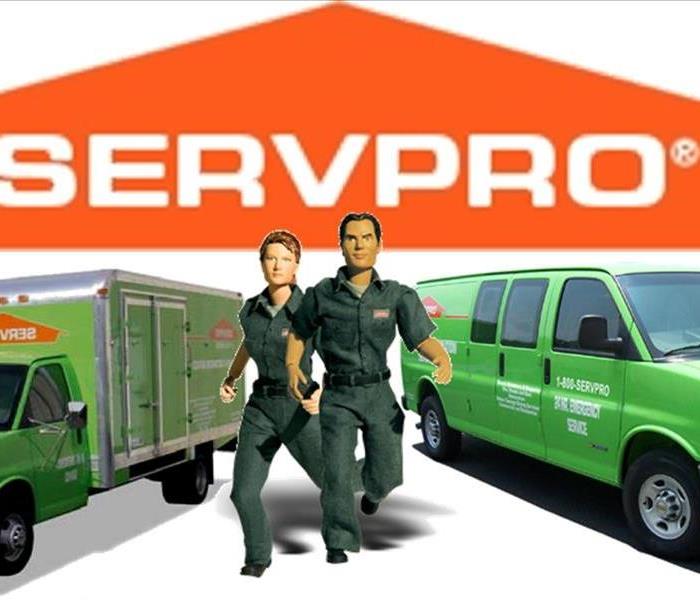 Ever wondered how ozone removes odors?
Ever wondered how ozone removes odors?
OZONE - DEODORIZATION TREATMENT
WHAT IS OZONE?
Ozone, (O3), sometimes called "activated oxygen", contains three atoms of oxygen rather than the two atoms we normally breathe. Ozone is the second most powerful sterilant in the world and can be used to destroy bacteria, viruses and odors.
HOW DOES OZONE WORK?
When contaminants such as odors, bacteria or viruses make contact with ozone, they are destroyed completely by oxidation. In so doing, that extra atom of oxygen is consumed and there is nothing left...no odor...no bacteria...no extra atom, only oxygen. Ozone reverts back to oxygen after it is used.
WILL THE ODOR COME BACK?
No. If ozone is applied properly it destroys (oxidizes) the source of the odor. However, in the case of mildew the odor will return if you are unable to get rid of the moisture that is the source of the mildew.
HOW DOES OZONE HANDLE TOBACCO SMOKE?
It eliminates the irritation caused by phenol gasses, by oxidizing them. Phenol gasses are the invisible part of tobacco smoke that causes such discomfort to one's eyes and create the offensive odors. Ozone rids any environment of the effects of smoke completely, rather than merely filtering out the visible particles.
WILL OZONE REMOVE STAINS AND NICOTINE BUILD UP?
No, ozone will not remove the stains. Ozone will deodorize and help to decontaminate the problem but will not remove the actual substance.

 24/7 Emergency Service
24/7 Emergency Service





